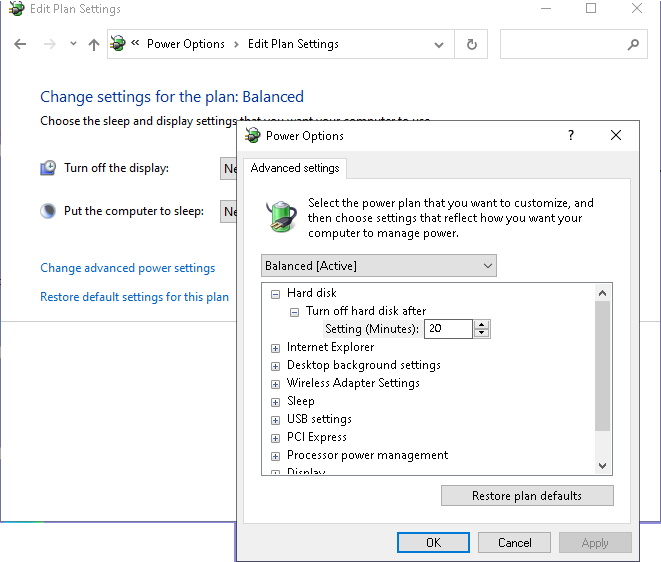Let's ignore the fact a 747 burns 340 pounds of fuel per minute and instead blame our pollution problems on the lowly laptop computer. So we need to give the PC a complicated and annoying power management scheme. Cancel one cross pacific flight and we could use the same energy to run all the laptops in the country for a decade without any power management.
Windows 10 has three power plans to choose from: Balanced, Power saver, and High performance. The difference between each plan is when the display turns off after you stop using the computer - anywhere between 1 minute and Never - , and when the computer goes to sleep - also anywhere between 1 minute and Never. There are default settings, but you can configure each plan to your desires. You can also create your own named custom plans.
Other than these plans, you can also set what happens when you click on the Start menu Shutdown or Sleep button. Your choices are: Do Nothing, Sleep, Hibernate, Shut down, or Turn off the display.

Each power plan has a link that allows you to configure Advanced settings. This opens up a dialog box where you can set the number of minutes after you stop using the computer to turn off the hard disk and which power plan will be used for everything from your Wireless Adapter to When playing videos. Each power plan also has link to restore the default settings for the plan.
I started off making sarcastic fun about Window 10 Power Management, however there are situations when they may be useful, for example if you have an office with thousands of computers and your employees spend a lot of time away from their desks. Letting a few thousand computers automatically go into low power mode may get significant savings on the organizations electric bill.
You have to take power management more serious if you intend to run a laptop on battery power. A laptop computer will provide more power management options, like what to do when you close the lid, and at what what remaining power level to lower the screen brightness. I recommend setting the remaining power level to 20% so you have time to complete what you're working on, or go find your power cable, before the computer shuts down. I set my remaining power level to lower the screen brightness to never because making the screen difficult to read makes no sense to me.
If you're curious about the difference between "sleep" mode and "hibernate" mode, in sleep mode your computer or monitor goes into a special low-power mode, in hibernate mode, your computer saves what its working on and turns off. When the system turns on again, the saved information is reloaded and everything is restored to the state before hibernation.
In any power plan you can select Advanced settings and configure Sleep to allow wake timers. Then in Task Scheduler you can configure a task to wake the computer to run the task.
The Window 10 Power Management is based on a standard called ACPI (Advanced Configuration and power Interface). It's works with both the kernel mode and the user mode and therefor has always had reliability problems and security issues. I recommend avoiding complex power configurations.
If you need to frequently change which power management plan Windows should use, follow the instructions below to create a shortcut to Control Panel's Power Option utility.
1. Right-click any blank area on the desktop, and in the context menu that appears, choose New | Shortcut.
2. In the Create Shortcut dialog box that appears, in the Type the location of the item: text box, type:
control powercfg.cpl
and click on the [Next] button.
3. In next page of the Create Shortcut dialog box, in the Type a name for this shortcut text box, change control.exe to Power Management.
4. Click on the [Finish] button.

